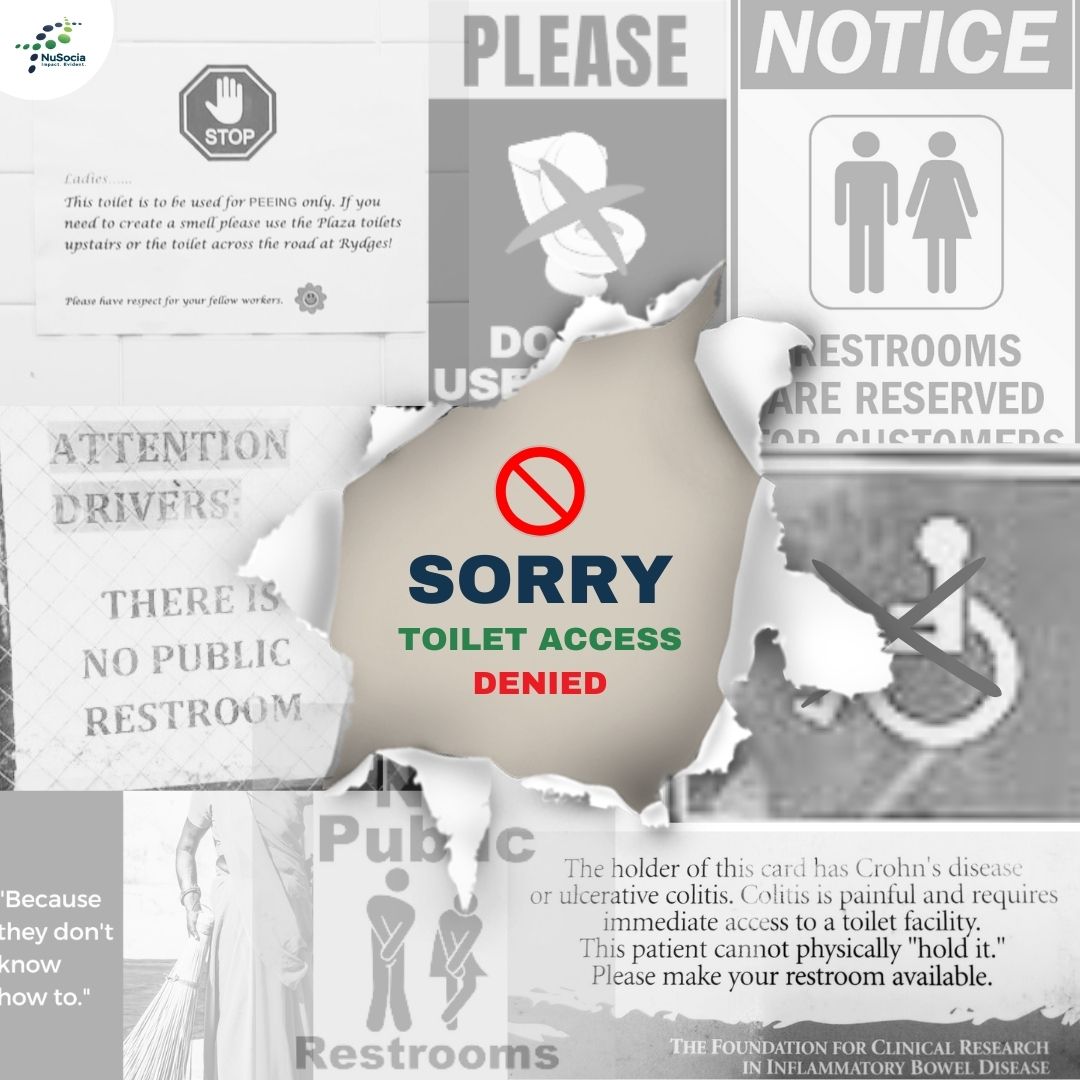Access to toilets may not be a glamorous topic, but it’s undeniably crucial. For every individual, the ability to use a toilet safely and comfortably is a basic human right, included in Article 21 of the Constitution under the Right to Life. Yet, despite efforts to improve sanitation, discrimination in toilet access remains a significant issue in India.
Under initiatives like the Swachh Bharat Mission, progress has been made in increasing access to basic sanitation. But, behind the impressive statistics lies a harsh reality. Many government-built toilets, particularly in rural areas, fall short of meeting the population’s needs. Inadequate infrastructure often leads to government-built toilets being used for purposes other than their intended function, leaving people with no choice but to resort to open defecation.
This lack of proper sanitation infrastructure not only poses health risks but also perpetuates discrimination. Rural-urban disparities are stark, with urban residents enjoying significantly better access to sanitation facilities than their rural counterparts. While over 90% of people living in urban areas in India can use sanitation facilities, only 39% of those residing in rural areas have access to similar facilities (National Human Rights Commission Report, 2021). This discrepancy not only reflects infrastructural shortcomings but also highlights a lack of awareness and education regarding sanitation rights, particularly in rural communities. In the urban context too, there is a wide gap in terms of sanitation facilities available and accessible based on class, residential region, and wealth category of the individual.
Moreover, discrimination in toilet access extends beyond infrastructure and wealth disparities. Factors such as caste, gender, disability, and age further compound the issue, preventing some individuals from accessing adequate sanitation facilities. The findings of reports by organizations like Human Rights Watch reveal how discrimination based on these factors hinders individuals from accessing sanitation services, particularly in public facilities.
Girls and women, in particular, face significant challenges due to the lack of gender-sensitive toilets, especially during menstruation. The absence of appropriate facilities in schools and public spaces not only impacts their health but also infringes upon their dignity and right to education, as well as their decision to work and be financially sufficient. Similarly, individuals with disabilities often find themselves excluded from accessing toilets due to the lack of accessibility features such as ramps. Since caste and religion-based discrimination persists in India, discrimination based on that is also prevalent. Often, the authoritative person comes from a higher caste or belongs to the majority religion, which prevents the use of the facilities equally for Dalits and minority groups. Furthermore, discrimination based on gender identity adds another layer of complexity to the issue. Transgender and non-binary individuals often face difficulties in accessing toilets that align with their gender identity, leading to feelings of exclusion and discomfort.
Addressing discrimination in toilet access requires a multi-faceted approach. It begins with raising awareness about the importance of equitable sanitation for all individuals, regardless of their background or circumstances. Governments must prioritize the provision of adequate sanitation facilities, ensuring that they are accessible, gender-sensitive, and inclusive of all individuals, including those with disabilities and diverse gender identities.
Ultimately, discrimination in toilet access is not just a matter of convenience; it’s a fundamental issue of human rights and dignity. Even though the issue is discussed widely and various gov and non-government interventions have been worked through, there is still a need to put more effort into working towards a future where everyone has equal access to safe, dignified, and hygienic toilet facilities.
References




